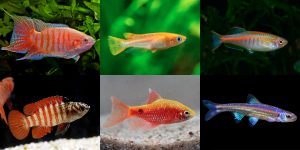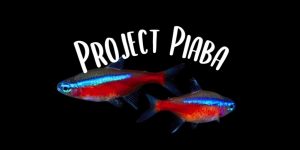Last week, the UK government‘s Fish Health Inspectorate issued updated guidelines for certain businesses in the aquarium trade. These updated guidelines primarily affect local fish shops and wholesalers involved in importing pet fish species.
Amendments to Aquatic Animal Health Regulations
The new guidelines refer to amendments made to the Fish Health Inspectorate’s most up-to-date Aquatic Animal Health Regulations. While the changes won’t directly affect hobbyists, it’s crucial that local fish shops that import their own stock take heed.
That’s so as not to affect future fish deliveries, first and foremost. However, failure to meet the mandatory new guidelines could also render shops and wholesalers liable for statutory action. It could also mean non-compliant shipments of fish being rejected and, with that, ultimately destroyed. And nobody wants that.
Thankfully, remaining compliant is mainly straightforward. All that’s necessary is to adhere to several requested changes tied to the existing health certificates required for all live fish imports. That includes both pet fish and farm fish species. The new rules also apply to shellfish.
Remaining compliant with the new rules
Remaining compliant should be as simple as using the new templates the government has provided for any import paperwork. To further ensure compliance, any imports made from last Wednesday, the 17 of August 2022, should meet with further new guidance that the government has issued. This additional guidance, titled ‘Notes for guidance for imports of live aquatic animals into Great Britain‘, can be found below.
It’s recommended that local fish shops that use smaller importers, wholesalers, and consolidators check with these third parties that they themselves are compliant in light of the changes.
All of the changes outlined above and below are now in effect. However, the government has issued a six-month grace period. During this time, it won’t take statutory action for non-compliance explicitly linked to the updated rules and regulations. That said, importers, wholesalers, and consolidators will remain liable for statutory action if previous guidelines aren’t met.
Then, from mid-February next year, all new rules must be met without exception, or further action will be taken. The Fish Health Inspectorate has also advised that it will increase checks on all health certificates in the interim and moving forward. So, efforts must be made to comply in any case.
Again, hobbyists shouldn’t be affected unless their favourite shop falls foul of the new rules. For those interested in finding out more, read on for the full guidance notes issued by the government.
Notes for guidance for imports of live aquatic animals into Great Britain
The information included below details mandatory requirements for imports into Great Britain*. Imports that do not meet the requirements detailed below are liable to statutory action being taken against the importer and the supplier and it could lead to the shipment being rejected/intercepted and ultimately destroyed.
The certifying official shall complete animal health certificates for consignments of live aquatic animals in accordance with the following requirements:
- the animal health certificate must bear the unique animal health certificate reference number, signature of the certifying official and the official stamp on every page; the colour of the signature and the colour of the stamp, other than an embossed or watermarked stamp, must be different to the colour of the printed text;
- where the animal health certificate contains multiple or alternative statements, the statements which are not relevant must be crossed out, initialled, and stamped by the certifying official, or completely removed from the animal health certificate; the crossings out, initial and stamps must be different to the colour of the printed text as detailed in point 1.
- the animal health certificate must consist of one of the following:
- a single sheet of paper;
- a sequence of pages with each page numbered so as to indicate that it is a particular page in a finite sequence;
- where a schedule or packing list is used to identify the species consigned, it must be made an integral part of the health certificate and must include the animal health certificate reference number on each page and must be signed, dated, and stamped by the certifying official in a colour other than the printed text on each page and under the last entry. All pages of the certificate, including the schedule or packing list, must be sequentially numbered.
- the animal health certificate must be issued by the certifying official not more than 72hrs prior to loading of the consignment and before the consignment leaves the control of the competent authority.
- the unique notification number (UNN) produced on IPAFFS must be provided to the competent authority and certifying official by the operator and/or importer responsible for the IPAFFS notification and must be added to the original animal health certificate.
- in the case of animal health certificates for entry into Great Britain, the animal health certificate must be uploaded on to IPAFFS by the operator and/or importer responsible for the IPAFFS notification at least one working day prior to arrival in Great Britain.
- the original animal health certificate must accompany the consignment until it reaches the place of destination in Great Britain and be made available for inspection by the competent authority, if and when required.
Model animal health certificates for the import of live aquatic animals into Great Britain can be found on GOV.UK and must be used in all cases: Fish and shellfish (live): model health certificates.
Note: It is the responsibility of the importer to liaise with the relevant competent authority in the UK to establish the health status of the destination. It is then the importers responsibility to communicate this information to the competent authority to ensure that the supplying sites health status is at least equivalent to the health status of the destination and the certifying officer is able to complete the health certificate accordingly.
Further information for England and Wales can be found on GOV.UK: Disease status of fish, shellfish and crustacean.
Further information for Scotland can be found on GOV.SCOT: Health status of fish and shellfish diseases in Scotland.
*Any reference to IPAFFS does not apply to the UK Crown Dependencies/Territories (Jersey, Guernsey, Isle of Man and Northern Ireland). Please contact the relevant competent authority or official service for live aquatic animals for guidance.






